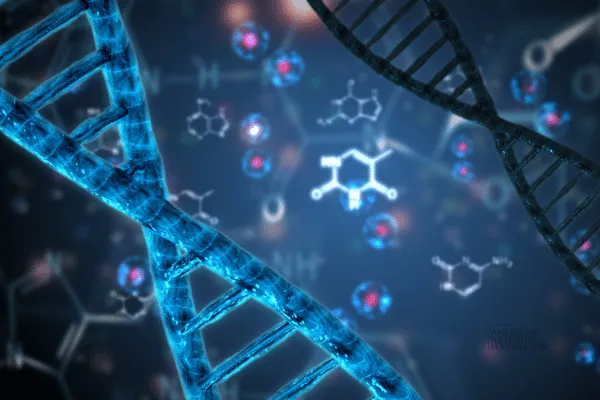Support and Learning Resources for Young Arthritis Patients
Close to 300,000 young individuals in the U.S. are affected by juvenile idiopathic arthritis (JIA) and related pediatric rheumatic conditions. These autoimmune disorders can impact joints, skin, eyes, and even internal organs. While receiving such a diagnosis might feel overwhelming, it's comforting to know that there are effective treatments to help manage the condition.
Juvenile arthritis encompasses a range of rheumatic conditions that affect children 16 years and younger. It's important to note that these aren't simply adult diseases appearing in kids; they have unique characteristics and require different treatment approaches. Among these conditions, juvenile idiopathic arthritis (formerly known as juvenile rheumatoid arthritis) is the most prevalent. Other examples include juvenile psoriatic arthritis, pediatric lupus, and several more.

How PDPA is Paving the Way for New Regenerative Therapies
Regenerative therapies aim to repair or regenerate damaged tissues, offering new hope for treating chronic diseases, injuries, and age-related conditions. As the demand for more effective and less invasive treatments grows, there is increasing interest in new approaches like Placenta-Derived Protein Array (PDPA). While current therapies like stem cells show promise, they have limitations, and PDPA's unique regenerative properties could offer a new solution. This article will objectively explore the potential of PDPA in regenerative medicine, focusing on ongoing research and future possibilities, without promotional bias.
Unique Properties of PDPA
Placenta-Derived Protein Array (PDPA) is gaining attention in regenerative medicine due to its unique ability to promote cell growth and tissue repair. The proteins derived from the placenta have been found to stimulate the body’s natural healing mechanisms, aiding in the regeneration of damaged tissues. This makes PDPA a promising tool in treatments aimed at healing wounds, repairing organs, and managing chronic conditions that involve tissue degeneration. Its regenerative properties come from its ability to encourage the formation of new cells and support the repair of injured or deteriorated tissues, which could lead to faster recovery and better outcomes for patients.
How PDPA Differs from Stem Cell Therapy
While both PDPA and stem cell therapy are focused on regeneration, they differ in their approaches and mechanisms:
Source and Mechanism:
PDPA uses specific proteins from the placenta that directly promote healing and regeneration by stimulating cell growth and tissue repair.
Stem cell therapy relies on using undifferentiated cells (stem cells) that can develop into different types of cells, aiming to replace damaged cells with new ones.
Application:
PDPA is more focused on enhancing the body’s natural healing process by supporting existing cells and tissues.
Stem cell therapy works by introducing new cells that can regenerate or replace damaged tissues.
Safety and Ethical Considerations:
PDPA involves non-invasive collection and has fewer ethical concerns compared to stem cell therapy, which can involve more complex ethical debates, especially around embryonic stem cells.
Scalability:
PDPA may offer an advantage in terms of production scalability, as proteins can be collected and processed in a controlled, reproducible way, while stem cell therapies often face challenges in sourcing, growing, and maintaining viable cells for treatments.
Current Applications of PDPA in Testing
Placenta-Derived Protein Array (PDPA) is currently being explored in a range of regenerative medicine applications due to its promising ability to stimulate cell growth and tissue repair. Here’s a closer look at the different areas where PDPA is being tested:
1. Wound Healing and Scar Reduction
PDPA is being actively tested for its potential in wound healing and scar reduction. Early studies suggest that PDPA can enhance the body’s natural healing process by promoting collagen production and improving tissue regeneration at the site of injury. This could result in faster wound closure and a reduction in scar formation.
Findings:
Clinical trials have demonstrated improved healing times in patients treated with PDPA, especially in post-surgical wounds and burn injuries.
Some early data suggests that patients may experience fewer scars and better overall tissue repair compared to traditional treatments.
Limitations:
While results are promising, more large-scale, long-term studies are required to confirm the sustained benefits and ensure the treatment’s safety over time.
Further testing is needed to determine whether PDPA’s effects vary based on factors like wound type or patient age.
2. Chronic Disease Management (e.g., Arthritis)
Another area of focus for PDPA is its role in chronic disease management, particularly for conditions like rheumatoid arthritis and osteoarthritis. These diseases are characterized by chronic inflammation and tissue degradation, and PDPA’s anti-inflammatory and regenerative properties could help alleviate these issues.
Findings:
In preclinical models, PDPA has shown potential to reduce inflammation and support the repair of damaged tissues, especially in joint cartilage.
Patients with arthritis who received PDPA-based treatments reported improvements in pain and joint function in early-stage trials.
Limitations:
The clinical impact of PDPA in treating chronic diseases like arthritis is still under investigation. More comprehensive trials are necessary to determine the consistency of these results and their applicability to different stages of the disease.
Long-term effects, especially in terms of preventing disease progression, remain uncertain.
3. Tissue Regeneration in Medical and Cosmetic Fields
PDPA is also being tested for broader applications in tissue regeneration, both in medical and cosmetic fields. Its ability to stimulate cell growth and enhance tissue repair makes it an attractive option for regenerative therapies in areas such as skin rejuvenation, organ repair, and cosmetic surgery.
Findings:
Early trials in cosmetic surgery have shown that PDPA can help reduce wrinkles, improve skin elasticity, and enhance the overall healing process after cosmetic procedures.
In medical applications, PDPA has demonstrated promise in supporting tissue regeneration in conditions like cardiovascular diseases and muscle injuries.
Limitations:
The effectiveness of PDPA in cosmetic applications varies, and more clinical evidence is needed to back its widespread use.
While PDPA has shown success in small trials, larger studies are required to ensure its reliability across diverse patient groups.
Summary of Potential and Limitations
Potential:
PDPA shows great promise in speeding up wound healing, reducing scarring, managing chronic inflammation, and supporting tissue regeneration in both medical and cosmetic applications.
It offers a non-invasive, scalable approach to regenerative therapy, and its ability to work alongside the body’s natural healing processes makes it an attractive option.
Limitations:
Much of the research is still in early stages, and more rigorous, long-term clinical trials are needed to fully understand PDPA’s effects.
There are uncertainties surrounding its long-term safety and efficacy, particularly in chronic disease management and large-scale tissue regeneration.
Future Possibilities of PDPA in Advancing Tissue Engineering, Organ Regeneration, and Joint Repair
Placenta-Derived Protein Array (PDPA) has the potential to revolutionize tissue engineering, organ regeneration, and joint repair by offering a new, non-invasive approach to stimulating the body’s natural healing processes. As researchers continue to explore the full capabilities of PDPA, here are some future possibilities for its application in regenerative medicine:
1. Tissue Engineering
PDPA could play a key role in tissue engineering by promoting the growth of new cells and the repair of damaged tissues. In this field, PDPA’s regenerative properties might be used to create bioengineered tissues that can be implanted to replace damaged or lost tissues in the body. This could be particularly useful for patients recovering from severe injuries, burns, or surgeries where tissue loss is significant.
Future applications could include using PDPA to develop skin grafts, muscle tissue, or even cartilage implants that help restore function and appearance.
By enhancing the body’s ability to regenerate tissue, PDPA might reduce the need for more invasive treatments like skin transplants or artificial tissue implants.
2. Organ Regeneration
One of the most exciting possibilities for PDPA lies in its potential to support organ regeneration. The ability to regenerate organs or repair damaged organ tissues could offer hope for patients with organ failure or those awaiting organ transplants.
PDPA could be used to stimulate the repair of heart tissue following a heart attack or to support liver regeneration in patients with liver disease. This would reduce the dependence on donor organs and significantly lower transplant waiting times.
PDPA’s role in promoting vascularization (the formation of new blood vessels) is also crucial for organ regeneration, as it ensures that newly formed tissues receive an adequate blood supply, which is vital for organ function.
3. Joint Repair
In the realm of joint repair, PDPA’s potential to regenerate cartilage and repair damaged joints could be transformative for individuals suffering from conditions like osteoarthritis and rheumatoid arthritis. As these diseases often lead to the breakdown of cartilage and joint function, PDPA may help restore healthy tissue, reduce pain, and improve mobility.
PDPA could be integrated into joint replacement surgeries to promote faster recovery and better long-term outcomes by enhancing the body’s ability to heal and repair joint tissues.
It may also provide a non-surgical option for patients in the early stages of arthritis by helping to regenerate damaged cartilage and delay or even prevent the need for joint replacement.
How PDPA Could Complement Existing Treatments
PDPA’s regenerative and anti-inflammatory properties make it a strong candidate to complement existing treatments for a range of chronic conditions, such as arthritis, heart disease, and autoimmune disorders.
1. Arthritis
PDPA could work alongside current treatments for arthritis by promoting the regeneration of damaged cartilage, which is often a major issue for patients. By reducing inflammation and supporting tissue repair, PDPA might enhance the effectiveness of anti-inflammatory drugs and physical therapies commonly used to manage arthritis.
Over time, PDPA could also reduce the need for more invasive treatments, such as joint replacement surgery, by helping to preserve joint function.
2. Heart Disease
PDPA’s ability to support tissue regeneration could be highly beneficial in patients with cardiovascular disease, especially after heart attacks, which cause significant damage to the heart muscle. Used in combination with traditional therapies like medications or surgery, PDPA might help repair heart tissue more effectively, promoting better outcomes for patients.
By promoting vascularization and reducing inflammation, PDPA could also assist in blood vessel repair, which is vital for maintaining a healthy cardiovascular system.
3. Autoimmune Disorders
PDPA’s anti-inflammatory properties could provide a complementary approach in managing autoimmune diseases such as lupus, rheumatoid arthritis, and psoriasis. While traditional treatments often focus on reducing immune system overactivity, PDPA could help minimize tissue damage and support healing at the cellular level.
In combination with immunosuppressive drugs, PDPA might reduce inflammation and tissue degradation, giving patients a more comprehensive treatment option with fewer side effects.
In conclusion, Placenta-Derived Protein Array (PDPA) holds significant potential in advancing regenerative medicine by promoting tissue repair, organ regeneration, and joint recovery. With its unique ability to stimulate cell growth and reduce inflammation, PDPA offers promising applications in areas such as wound healing, arthritis treatment, and cardiovascular repair. While ongoing research is needed to fully validate its effectiveness and safety, PDPA could complement existing treatments for chronic diseases and provide a less invasive option for patients. As the science continues to evolve, PDPA may play a key role in the future of regenerative therapies, bringing new hope to individuals facing a variety of medical challenges.
Have a question?
We're Here to Help
By providing my phone number, I agree to receive text messages from the business.

